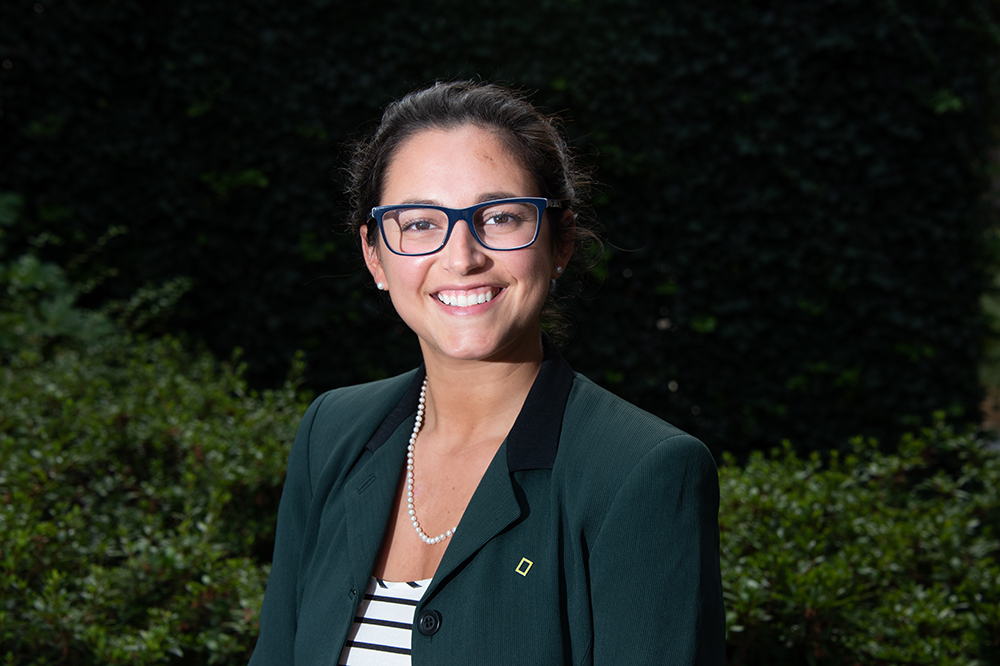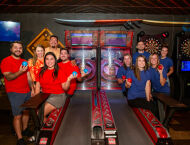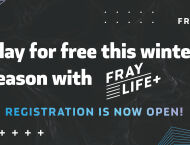Life
 Gabrielle Corradino. Photo courtesy of subject.
Gabrielle Corradino. Photo courtesy of subject.
Nat Geo Explorer Gabrielle Corradino on Plankton, the Anacostia + Conservation
April 20, 2021 @ 2:48pm
Gabrielle Corradino is one of those rare humans who knows exactly what they want to do with their life from the beginning. For her, it was marine science and education. Raised in Connecticut, Corradino worked as a middle school science teacher, received her PhD in biological oceanography from North Carolina State University, and then came to research in D.C. through NOAA’s Knauss Fellowship right before the pandemic hit.
During lockdown, she still worked in the field. Her preferred pandemic activity? Testing different types of plankton in the Anacostia River. A video put out by National Geographic shows part of her method. Corradino stands in waders at Poplar Point, waist-deep in the water, moving a mesh net back and forth to capture organisms, and then studies the tiny drops of the water under her microscope. “Pretty much anywhere I can get water, I’ll sample it,” she says.
In general, there are many different forms of plankton in our waters. “Plankton is a lifestyle. So, any organism in our rivers or streams or oceans that can’t swim against the current–they’re a plankton. Larval crabs, larval lobsters, larval fish, phytoplankton, bacteria — they’re all plankton.”
In the Anacostia River, she’s been finding both phytoplankton and zooplankton, which make up the two main groups; the former are plantlike and sustain through photosynthesis, and the latter are animal-like and hunt their food. Corradino tests different waterways to make sure they contain healthy populations of plankton.
“Plankton are the unsung heroes of our waters. They’re the base of the food web. So many things depend on them for survival,” she says. In fact, plankton produces more than 50% of our oxygen. “But, I’m also finding microplastics in the water.”
While she points out that finding microplastics isn’t out of the ordinary, it’s worth noting that along with tiny miracles in our water, we’ve also created these tiny disasters.
“Our footprint is affecting even the smallest of organisms. Whatever we do on land is going to impact our waters — whatever fertilizers we use, whatever trash we’re not disposing of properly.”
We’ve all walked through D.C. and witnessed plastic bags clinging to bushes, masks stamped into the sidewalk, empty cups and bottles lining Rock Creek’s shores. As the pandemic made us worry more about germs, this waste was easier to walk past. But, we know now that the coronavirus spreads through the air. We can pick up the trash, wash our hands, and help our ecosystem thrive. We can ask lawmakers and businesses to restrict plastic production in general. We can avoid adding waste to our land and our water — as one always bleeds into the other.
Corradino touched on the fatigue we all feel from these constant call-to-actions: “There are so many areas that need attention, that need work in society, and that’s hard to carry as someone who cares about the environment.”
She knows that each individual call is important, and so, finding a way to compartmentalize can help. But this call for maintaining and creating a healthy ecosystem doesn’t have to feel so heavy all at once.
“The best way [to protect our environment], truly, is just to be a responsible citizen,” she says.
It’s creating daily habits, routines that don’t feel heavy over time–buying recyclable packaging, composting food waste, picking up trash we see on the street. And with Earth Day coming up, as well as April being Citizen Science month, now is a great time to join in on larger projects throughout the District.
Corradino says working on environmental projects is not limited to those with a science degree. For instance, though plankton is Corradino’s main area of study in general, sampling the Anacostia was actually a personal project, checking in on the plankton’s health, with help from the National Geographic Society.
“There are so many ways to participate as citizen scientists in the local D.C. waterways, whether it’s helping clean it up, or tracking marine debris, or shoreline debris — there are all these different things to do,” Corradino says.
While we push for systemic change, it’s helpful to remember that even one person out of seven billion can make a small difference, just like one phytoplankton is just as essential as seven trillion others. In addition to the research, Corradino’s way to make a difference is through education.
“I have an Instagram where I post pictures of plankton to try to inform the public about the diversity of them and how beautiful they are, and how important they are.”
Corradino works to combine passion, play, and research, and we can, too. Just like Corradino has known what she wanted to do from a very young age, we also know what we need to do: utilize what we care about to make a better world.
For more on Corradino’s research, follow @MarchofthePlankton on Instagram. For more on the Nat Geo Explorers program, visit www.nationalgeographic.org/projects/explorers/ and follow @natgeo on Instagram.
Earth Day Events
4.21
Earth Day Eve Celebration
Tune in to National Geographic’s Earth Day Eve Celebration on April 21 at 8:30 p.m. featuring Dr. Jane Goodall alongside musical performances from Willie Nelson, Ziggy Marley, Maggie Rogers and many more! www.nationalgeographic.com // @natgeo
Virtual Field Trip
Join National Geographic for a Virtual Field Trip to the deep blue on April 21 at 1 p.m. with National Geographic Explorers Brian Skerry, Salomé Buglass and Young Explorer Sruthi Gurudev. www.nationalgeographic.com // @insidenatgeo
4.22
Explorer Classroom
On April 22 at 10 a.m. or 2 p.m., tune in to Explorer Classroom — a live interactive YouTube event that connects young people with National Geographic Explorers to hear behind-the-scenes stories about their work. www.nationalgeographic.com // @insidenatgeo
Secrets of the Whales
Tune in to “Secrets of the Whales” on Disney + on April 22 featuring renowned National Geographic photographer Brian Skerry who captures the intricate social structures of five different whale species: orcas, humpbacks, belugas, narwhals and sperm whales. www.disneyplus.com // @disneyplus
Enjoy this piece? Consider becoming a member for access to our premium digital content. Support local journalism and start your membership today.







